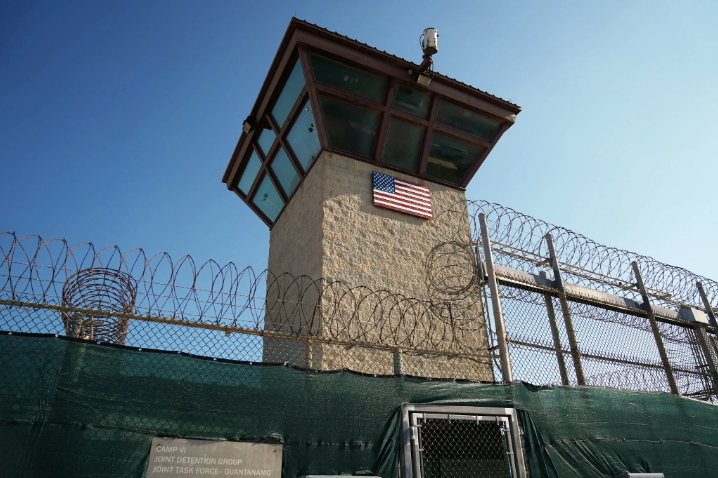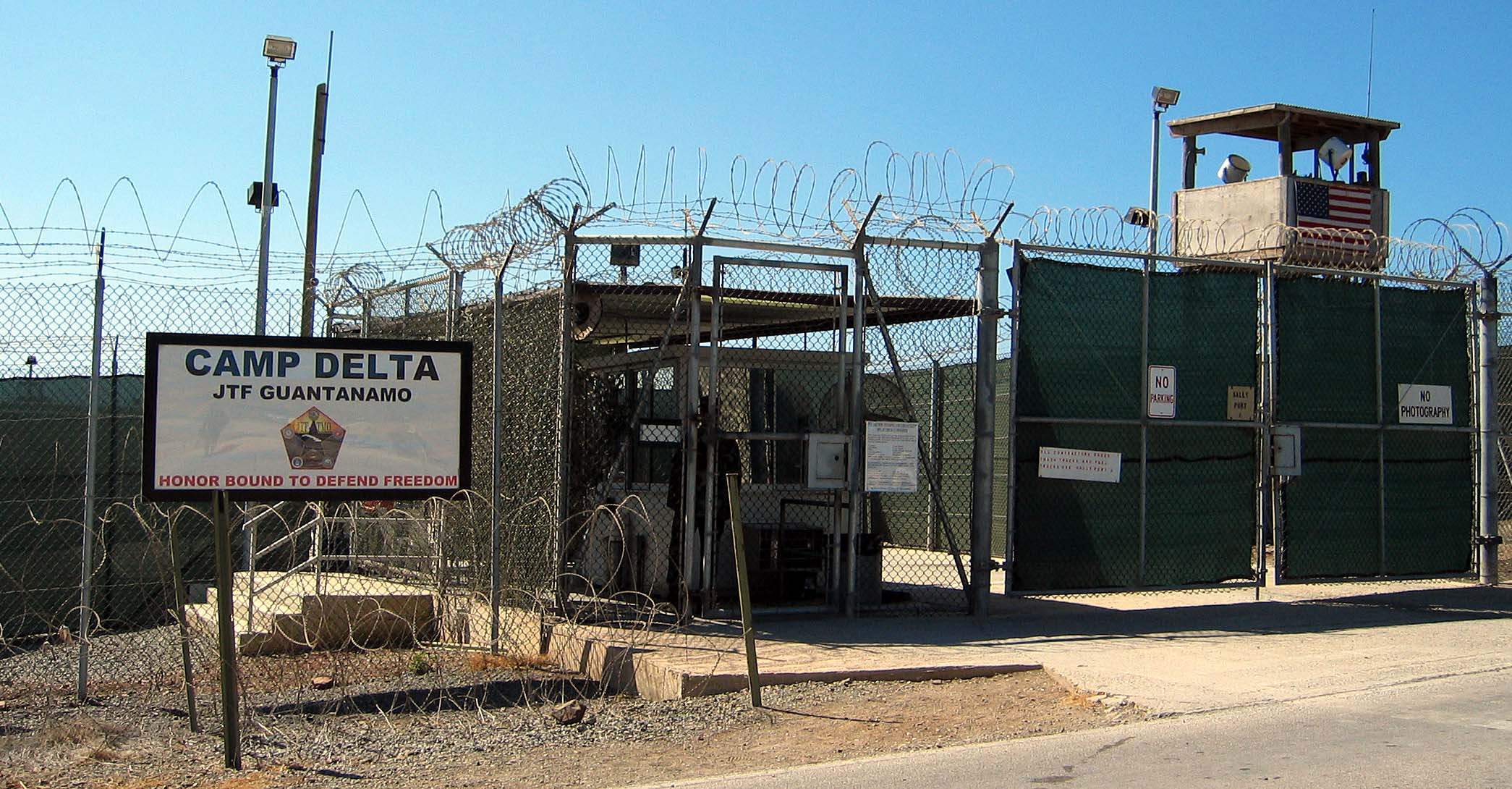
GUANTÁNAMO BAY, Cuba — In the months after their arrival at Guantánamo in 2006 from years in C.I.A. detention, Khalid Shaikh Mohammed and the other accused plotters of the Sept. 11 attacks were guarded by a secret force disguised as United States troops and kept isolated in individual cells, unable to communicate with each other, a former commander testified Friday.
The account of their early days at Guantánamo emerged in a pretrial hearing on Friday in the case of Mr. Mohammed and four other men accused of conspiring in the 2001 attacks. The commander's testimony amounted to the most comprehensive view yet of Guantánamo's most mysterious prison, known as Camp 7, and the secret unit, called Task Force Platinum, that has guarded it since its inception.
Lawyers for Mr. Mohammed and the other defendants want the judge to exclude from their death-penalty trial, scheduled to start in January 2021, what they told F.B.I. agents in early 2007, months after they got to Guantánamo. The defense lawyers say those interrogations — carried out by what prosecutors say were "clean teams" from the F.B.I. who were unfamiliar with evidence unlawfully obtained from the defendants during the years they were in C.I.A. custody and subject to torture — were in fact tainted by years of clandestine C.I.A.-F.B.I. collaboration.
The defense lawyers argue that the prisoners provided the same answers to F.B.I. agents in 2007 that they had previously given to the C.I.A. at black sites where they were punished for not cooperating, and did not believe, based on conditions at Guantánamo, that they had free choice to refuse.
To rebut the defense, prosecutors on Friday called the former Army officer who served as the first commander of Camp 7. He testified about how he took custody of the accused Sept. 11 plotters and other C.I.A. prisoners as they came off a C-17 cargo plane in the dark of night at Guantánamo in September 2006 and, starting four months later, had his troops shepherd them to the F.B.I. interrogations.
The prisoners were told on the eve of an interrogation that they had an appointment the following day, which they could choose to attend. The commander said he never told them they were to be F.B.I. interrogations but checked with them the next morning on whether they would go to the appointments. They took place at a portion of the Guantánamo prison compound called Camp Echo II.
The former Army officer, who came to court in a sports jacket and tie, testified anonymously at the insistence of case prosecutors. He described a security regime set up by the Bush administration in September 2006 as it acknowledged to the world, for the first time, that it had held and interrogated prisoners in secret sites around the world starting in 2002.
Accounts of the violence the C.I.A. used in the black sites — waterboarding, beatings, sleep deprivation, rectal abuse and hanging their captives by their wrists — would emerge later.
Once at Guantánamo, according to the Camp 7 commander, the 14 prisoners were taken to their new cells, showered and provided with "fresh clothes." The prisoners included Mr. Mohammed as well as a Saudi man now awaiting a capital trial as the accused mastermind of Al Qaeda's 2000 bombing of the U.S.S. Cole warship of Yemen and a never-charged Palestinian man known as Abu Zubaydah, who was the first detainee to be waterboarded in C.I.A. custody.
Most of the commander's testimony on Friday occurred in a hearing closed to journalists because prosecutors invoked a national security privilege over much of the information about how the prison was set up and who worked there.
For example, the former commander was forbidden to describe in open court what the 14 former black site captives were wearing or how they looked when they arrived in 2006. Nor did he explain in his testimony why the guards who worked for him on the cellblocks wore United States military uniforms but were not employees of the Defense Department, a remark that suggested they were C.I.A. agents or contractors disguised as soldiers. Their uniforms bore no ranks and had pseudonyms where their names belonged.
The former commander also said he disagreed with a finding of a Senate Intelligence Committee that Camp 7 was "under the operational control of the C.I.A." He said he worked directly for the overall Guantánamo detention center commander at the time, Rear Adm. Harry B. Harris Jr. of the Navy.
During their first Ramadan at Guantánamo, the commander said, the Camp 7 prisoners ate alone, prayed alone and had no contact with each other. A recorded prayer call piped through a speaker system announced prayer times.
The prison provided them with halal meals, which the guards delivered by opening two doors leading to their cells and then unlocked a slot in the innermost door.
In time, they were allowed to exit the back door of their cell to an enclosed recreation yard that has been described as a cell made of chain-linked fencing surrounded by camouflage netting with a restricted view of foliage on one side. Later, the Pentagon sent word that the prisoners could have recreation time in pairs, in separate cells.
A lead prosecutor, Robert Swann, disclosed for the first time during the hearing that an F.B.I. agent came to Guantánamo in November 2007 with an unusual request for the guard force. The agent got permission to bring a six- to eight-inch hair brush to an interrogation of Mr. Mohammed to photograph him holding it.
The anonymous Camp 7 commander said the agent was photographing how Mr. Mohammed "held the brush" to "compare it to the time when he had a weapon in his hand to murder someone." Mr. Swann said that the agent was trying to establish if the hand that held the brush matched the hand of a man on a videotape beheading Daniel Pearl, a Wall Street Journal reporter, in Pakistan in 2002.
Mr. Mohammed has never been charged with killing Mr. Pearl, although Pakistan prosecuted several other men for the kidnapping and killing.




